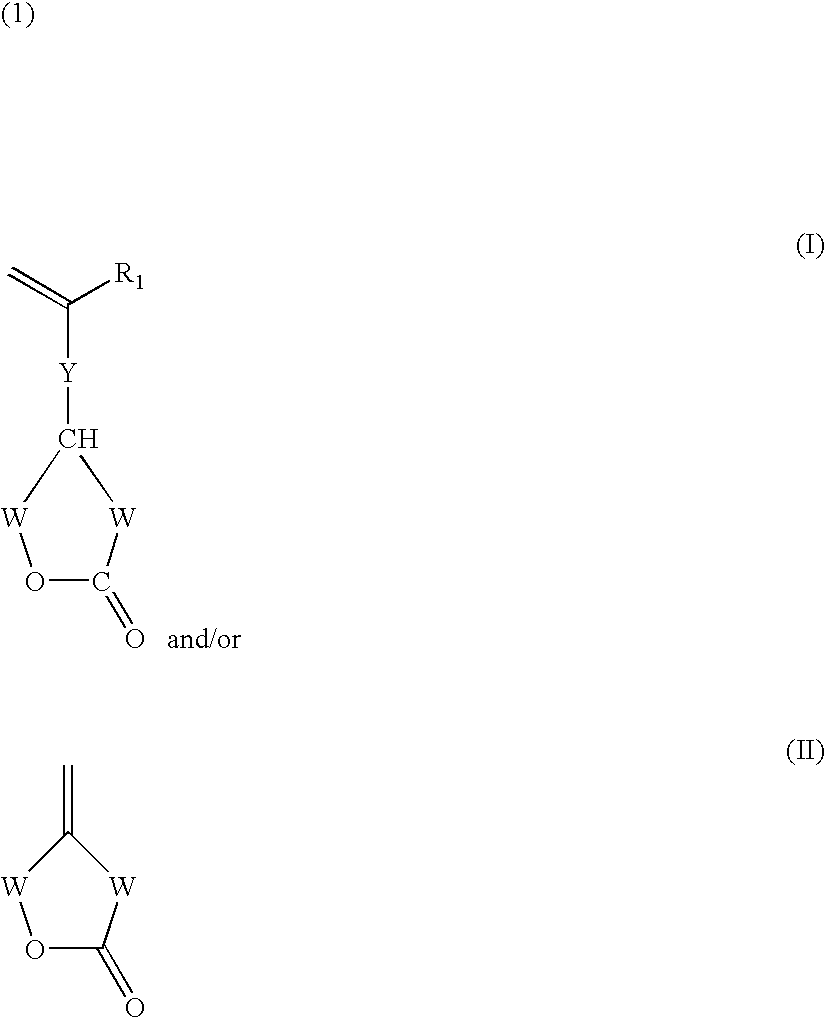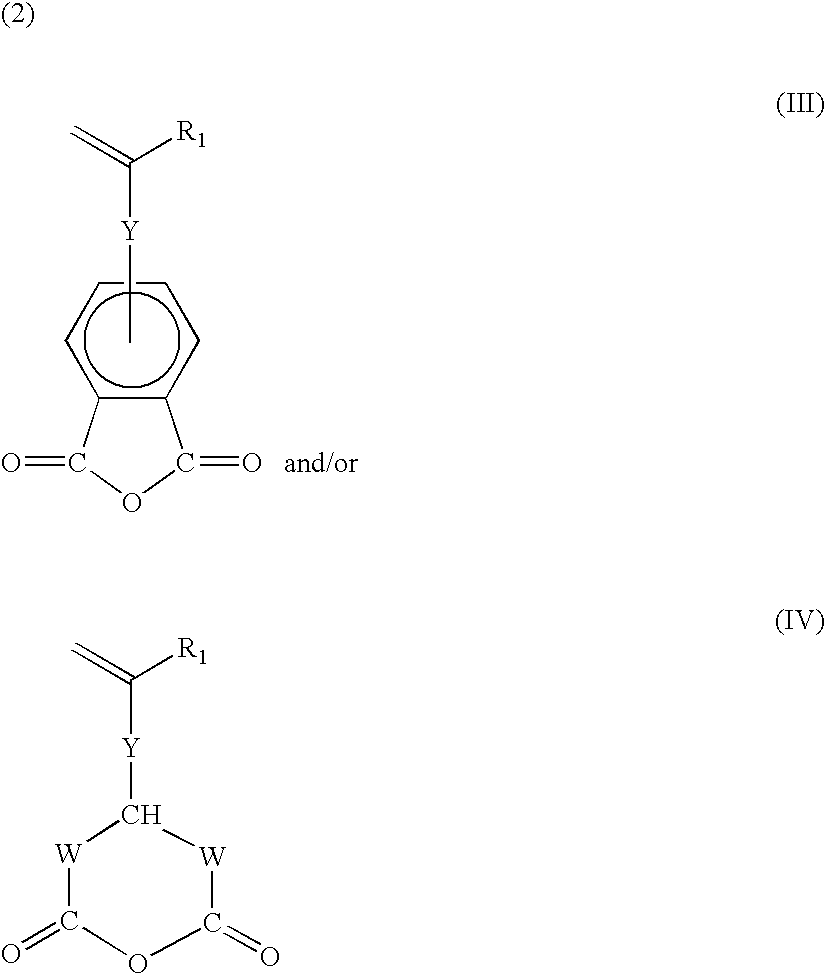Functionalization of silicones and anti-adhesive coatings made therefrom
a technology of silicone oil and anti-adhesion coating, which is applied in the direction of liquid degasification, organic chemistry, separation processes, etc., can solve the problems of incomplete gelling of reaction medium, difficult to obtain final products, functionalized organosilicon compounds, etc., to reduce the coloration within unsaturated synthons, avoid gelling, and limit parasitic reactions of cationic polymerization
- Summary
- Abstract
- Description
- Claims
- Application Information
AI Technical Summary
Benefits of technology
Problems solved by technology
Method used
Image
Examples
examples
[0106]The 4-vinylcyclohexene epoxide (VCMX) used in the examples which follow comes from the company Union Carbide. It is systematically distilled before use.
[0107]The tetramethylhydrodisiloxane (M′2) used is manufactured by Rhodia Silicones. It is itself also distilled before use.
[0108]The catalyst Pt on carbon black (wet) is available from the company Aldrich under the reference 33,015-9. The platinum content is 2.5% by weight. The water content is approximately 50% by weight.
[0109]The functionalization auxiliary used is sodium hydrogen carbonate (NaHCO3).
[0110]The amounts of catalyst, of NaHCO3 and of water are expressed relative to the total mass of VCMX and of M′2.
[0111]The epoxide functions are measured by potentiometry. The device used is a Mettler® device, model DL21, equipped with a Mettler Toledo DG 113 SC LiCl / EtOH, 1.0 M, combined electrode. The titrating solution is a solution of 0.1 N perchloric acid in acetic acid.
[0112]Common Procedure for Examples 1 to 5 and Counter...
PUM
| Property | Measurement | Unit |
|---|---|---|
| molar ratio | aaaaa | aaaaa |
| particle size | aaaaa | aaaaa |
| molar ratio | aaaaa | aaaaa |
Abstract
Description
Claims
Application Information
 Login to View More
Login to View More - R&D
- Intellectual Property
- Life Sciences
- Materials
- Tech Scout
- Unparalleled Data Quality
- Higher Quality Content
- 60% Fewer Hallucinations
Browse by: Latest US Patents, China's latest patents, Technical Efficacy Thesaurus, Application Domain, Technology Topic, Popular Technical Reports.
© 2025 PatSnap. All rights reserved.Legal|Privacy policy|Modern Slavery Act Transparency Statement|Sitemap|About US| Contact US: help@patsnap.com



